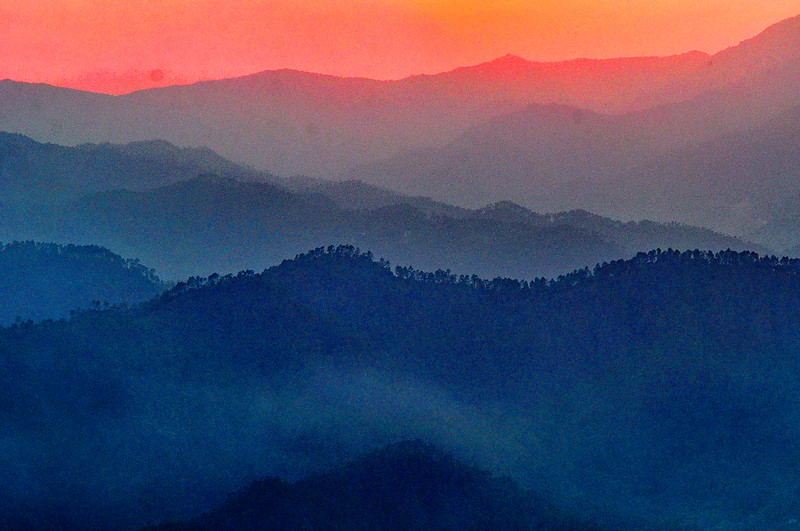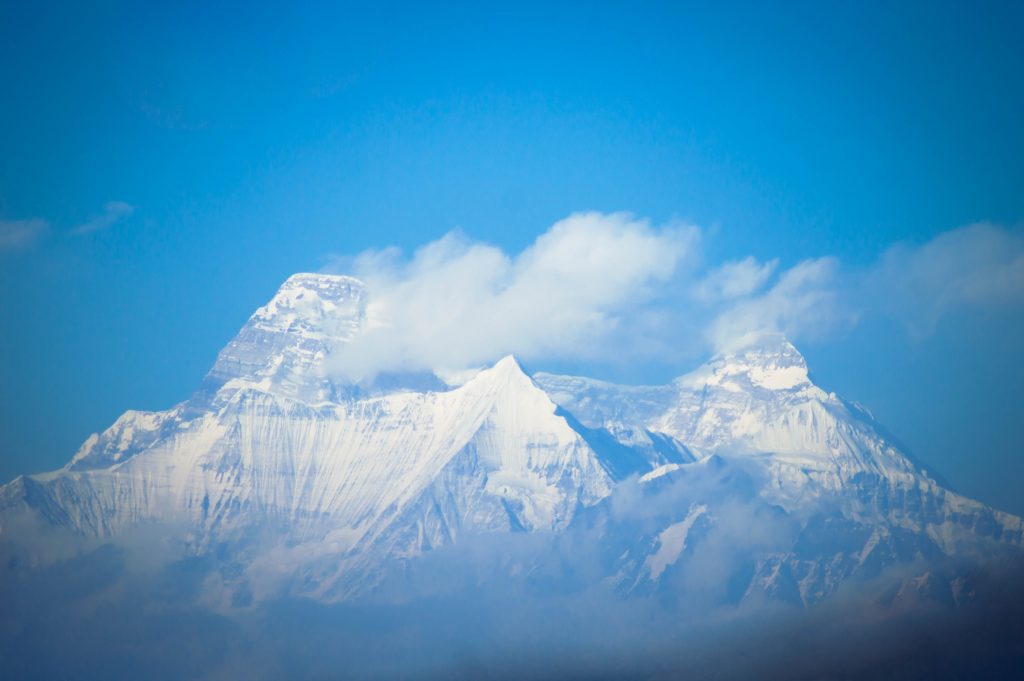Located at an elevation of 2,412 meters above sea level, Binsar looks like a sleepy little hamlet at first sight. Hidden away in the Kumaon region of Uttarakhand, Binsar isn’t exactly on anyone’s mainstream tourist destination list. But this little haven in the hills is far from sleepy; it’s bursting with life, from birds and wildlife to trees and flowers. This is the Binsar Wildlife Sanctuary, and there are more ways than one that you can discover its many wonders. Read up about the 4 ways to explore the Binsar Wildlife Sanctuary.
About The Binsar Wildlife Sanctuary
Binsar is a relatively small and unknown area in Kumaon, but one that has seen its fair share of history and culture. It was given the status of a wildlife sanctuary in 1988; the result of a successful movement by the local communities. The communities are very much alive today and live in 9 picturesque, traditional Kumaon villages. The sanctuary covers around 45 sq. km., and is a true paradise for anyone who visits. The entry fee is INR 150 for a day, and the vehicle fee is INR 250 for a small vehicle, INR 500 for a medium one, and INR 800 for a heavy one.
There are a couple of ways to explore the Binsar wildlife sanctuary; trails run through the park for trekkers and walkers, while a jeep safari can take you around much faster. History lovers will be thrilled to know that the region is a living, breathing result of life’s many historical turns. You can read all about it in our blog and truly relive history when you walk through the park. Finally, birdwatcher novice or professional ornithologist, the sanctuary has an abundance of birds to look out for.
Going Back In History
Binsar is an offbeat location in Uttarakhand today, but at one time, it was significant enough to be a capital. The rulers of the Chand Dynasty of Almora that once ruled over Kumaon established Binsar as their capital. It was also the location where they came to enjoy the summers, as the pleasant weather and cool climes provided the perfect escape from the Indian summer sun. The Dynasty had a long and successful reign, from the 11th to the 18th century, which was when they fell to the British.
Kumaon then became a British administered region, and the senior British bureaucrats established houses and estates here. At the time, pine tree plantations proved to be commercially valuable, and acres of natural biodiversity were destroyed in order to grow pine trees. The bureaucrats collectively protected Binsar from the pine plantations, retaining its natural biodiversity and ecosystems. They also grew orchards on their estates, and Binsar became to them what Shimla was to the British in Himachal.

Today, you can see remnants of this history; the lower reaches of the Sanctuary are covered in dense pine trees. But the higher you go, the more the pines begin to fade and the natural flora and fauna begin to appear. Nature isn’t the only marker of this history; of the 6 estates in the park, 5 are currently operational. You can actually book a stay at one of the state houses to truly soak up the park’s historical beauty. Don’t miss the Forest Rest House which is also over a hundred years old.
History runs deep at Binsar, whether it’s in the roots of the trees that have seen rulers come and go, or in the silent buildings and estates that are still standing all these years later!
Hiking Down Trails In The Binsar Wildlife Sanctuary
The Binsar Wildlife Sanctuary has taken steps to ensure it continues to remain a sanctuary for its biodiversity by fending off commercialization and construction. The result? Only one road through the entire forest on which vehicles are allowed, and uninhibited nature at her finest. Over 60 km of walking and trekking trails wind their way through the hills, and heading down one of them is a great way to explore the Binsar Wildlife Sanctuary.
If you definitely want to get the best view possible, make sure you include Zero point in your trek route. This is one of the highest and best viewpoints in the entire sanctuary, from where you get an uninterrupted view of a 300 km stretch of the Himalayas. You can also spot some popular peaks like Nanda Devi, Nanda Kot, Kedarnath and Panchachuli. Additionally, request for a local guide to take you for a village walk in the park. This gives you a glimpse into the lives of the locals who have mastered the art of living in harmony with nature.

One route that includes Zero point is the Ghoralkot Walk. This walk covers around 3 km and takes around 1.5 to 2 hours. We won’t be surprised if you take longer, since the stunning view at Zero point is sure to leave you captivated for a bit! A route that’s best left to the avid trekkers is the 8-hour, 15 km Gonap Katdhara walk. Call ahead and enquire about organizing a special trek when you visit if you’re just dropping in for a day. Alternatively, if you’ve booked a stay at one of the 5 properties in the park, make sure you ask about treks since almost all organize treks for their guests.
Following The Birds
If you’re playing ‘I Spy’ in Binsar, don’t even bother picking ‘a bird’, since they’re everywhere! All you need is a keen eye and to be a little less noisy, and you can spot these colorful warblers flitting around from tree to tree. The forests in the sanctuary are rich, and being able to retain its natural biodiversity has allowed the wildlife to truly flourish. The result is over 200 resident and migratory birds to spot, making it one of the best ways to explore the Binsar Wildlife Sanctuary for the bird-lovers.

You’ll need to pay special attention to spot the bar-tailed treecreeper, Eurasian jay, mistle thrush and oriental turtle dove. All of these are shades of brown, and can camouflage themselves against the trees with little to no effort! A flash of green and yellow could be the long-tailed broadbill, while hues of blue could be a verditer flycatcher, an ultramarine flycatcher, or the Rufous-bellied niltava. There are also woodpeckers, thrushes, and the intimidating Himalayan vulture, so keep those eyes peeled!
On A Safari
One of the easiest ways to explore the Binsar Wildlife Sanctuary is by hopping into a jeep and being driven into the dense jungles. The sanctuary has loads of wildlife roaming its grounds, of which the most elusive is the leopard. There are also endangered species here like the Indian red fox, pine martens, porcupines and jackals. Look up into the trees to spot monkeys swinging around, and down on the ground to see wild boar and Himalayan bears making their rounds.
The best part about the safari is that you get to cover a lot more ground, and the safari will take you to spots where animals are frequently spotted. On the other hand, you won’t be able to explore the sanctuary at your own pace. Plus, animals aren’t predictable, and while some safaris have several instances of spotting wildlife, others will only have a glimpse or two.
Call ahead and ask about being able to go on a safari through the park. You can also drive around the park yourself, but you need to stick to the one motorable road there is and pay the vehicle fee.
Conclusion
Don’t let these 4 ways to explore the Binsar Wildlife Sanctuary limit you – as long as you play it safe and don’t cause any harm to the nature around you, explore it in whatever way you like! Make sure you don’t reach the park too late, since it can be quite a distance from other places. Thankfully for you, our goSTOPS Almora is a mere 45-minute drive away. Plus, equipped with the comfiest beds and coziest common room, we’re the perfect place to stay in Almora.
FAQs
Why Is Binsar Wildlife Sanctuary Famous?
The Binsar Wildlife Sanctuary is home to endangered animals such as the Himalayan black bear, jackals and porcupines. It was also established to protect the broad leaf oak trees that grow here. Plus, the sanctuary has a lot of history and great views to boast. These are its famed qualities, but the sanctuary isn’t one that enjoys a lot of fame.
In Which District Is Binsar Wildlife Sanctuary Located?
The Binsar Wildlife Sanctuary is located in the Kumaon district of Uttarakhand.
Is Binsar Worth Visiting?
Yes, Binsar is well worth the visit! The lush green forests and breathtaking views of snowcapped mountains are unbeatable, as is the chance to stay on one of the Colonial estates within the park.
How Can I Go To Binsar Wildlife Sanctuary?
You’ll need to board a flight to the Pant Nagar Airport, a good 155 km away from Binsar. Alternatively, hop on a train to Kathgodam; it shares good rail connectivity with most major cities in India. It is around 55 km away from Binsar. From here, you can get a cab or bus to take you to Almora.


